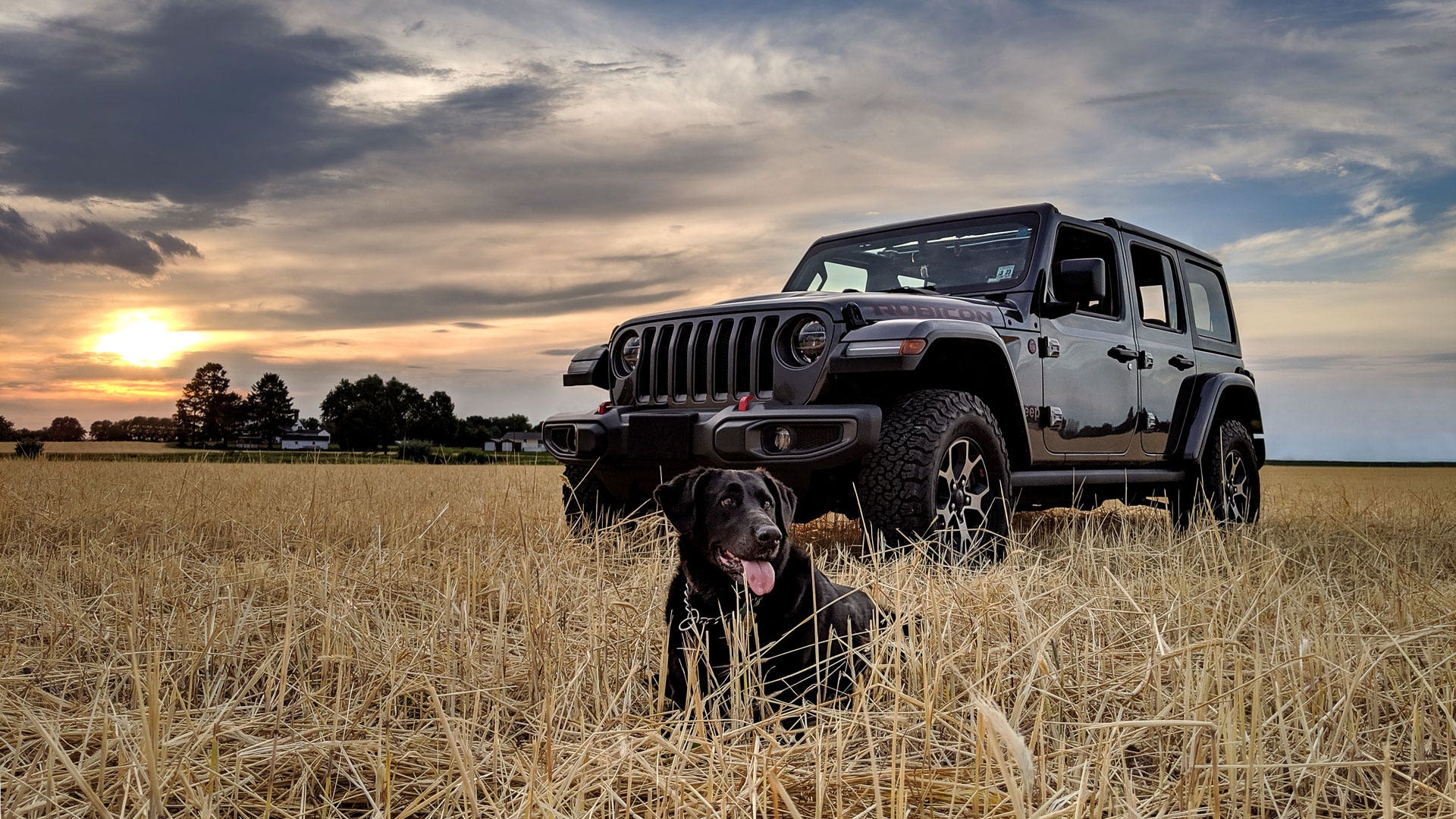
Everyday Exploration - Oil Catch Can Kit, Part 2: Stock Review
As summer begins
here in Delaware, the air is getting warmer, the days are growing longer, and
adventure is in the air. It seems like more and more off-road-ready vehicles
are hitting the streets and trails to capture their piece of the great outdoors,
and the Jeep Wrangler is no exception. While Wrangler owners across the country
are getting ready for their next adventure, our engineers at Mishimoto have
been working to keep the newest addition to the Wrangler lineup, the JL 2.0L
turbo, ready too.
With our catch can for the 3.6L Pentastar wrapped up, we've been working on a version for the 2.0T. Our last post focused on the effects of blow-by in modern engines and why catch cans are important for protecting your 2.0T JL. Now it's time to get into the nitty-gritty and begin R&D.
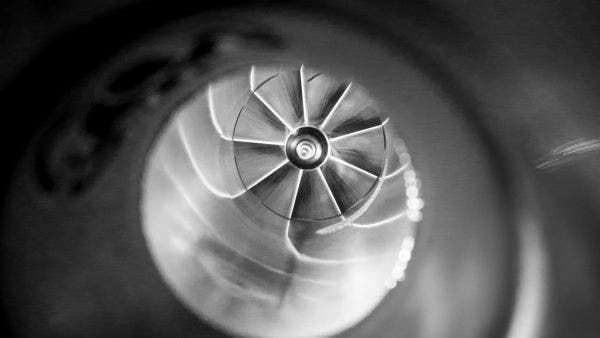
By definition,
the first step of R&D is research. For us, research consists of examining
the stock system and learning how it works. The CCV system on most naturally
aspirated engines is typically quite simple, while engines that utilize forced
induction have much more complicated CCV systems. CCV systems need a vacuum
source to evacuate blow-by from the crankcase. In a naturally aspirated engine,
this vacuum source is almost always the intake manifold. Because the intake
manifold in a forced induction engine is pressurized under boost, and the goal
of the CCV system is to remove pressure from the crankcase, a second vacuum
source is needed.
Like most
engines, the JL's 2.0T Hurricane PCV system uses a valve connected to the
intake manifold to evacuate blow-by from the crankcase during light cruising
when boost pressure is low. Once the turbo begins pressurizing the intake, the
PCV valve closes to prevent that pressure from entering the crankcase and the
system shifts to the pre-turbo vacuum source.
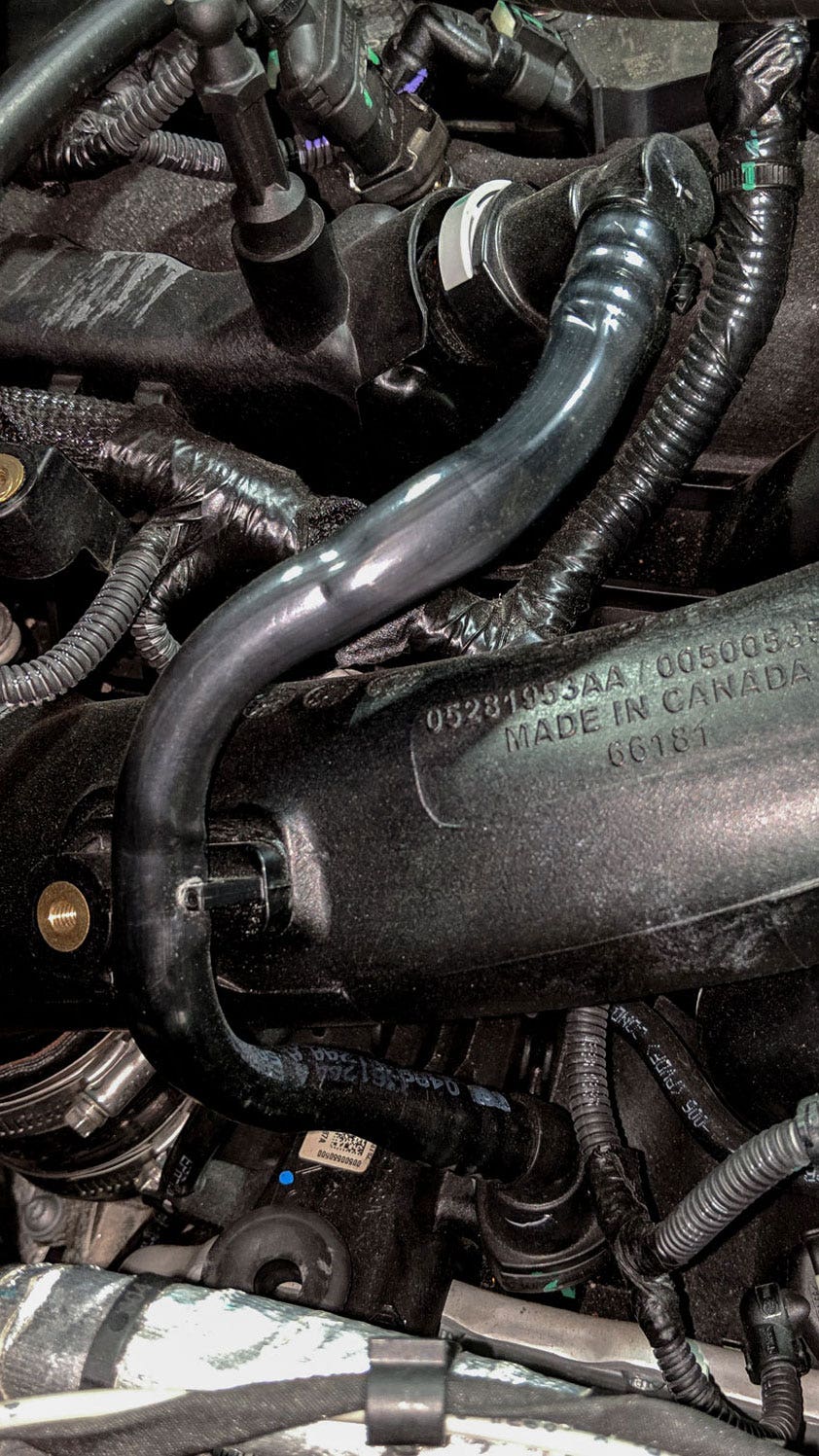
The boost side
of the 2.0T's CCV system is where things get complicated. Strict emissions
standards in the US and abroad mean that any ventilation system is closely
monitored. Because the boost side of the CCV system generates more pressure,
and therefore more blow-by, manufacturers have started implementing finely
tuned sensors to monitor crankcase pressure and make sure that none of it is
leaving the emissions system.
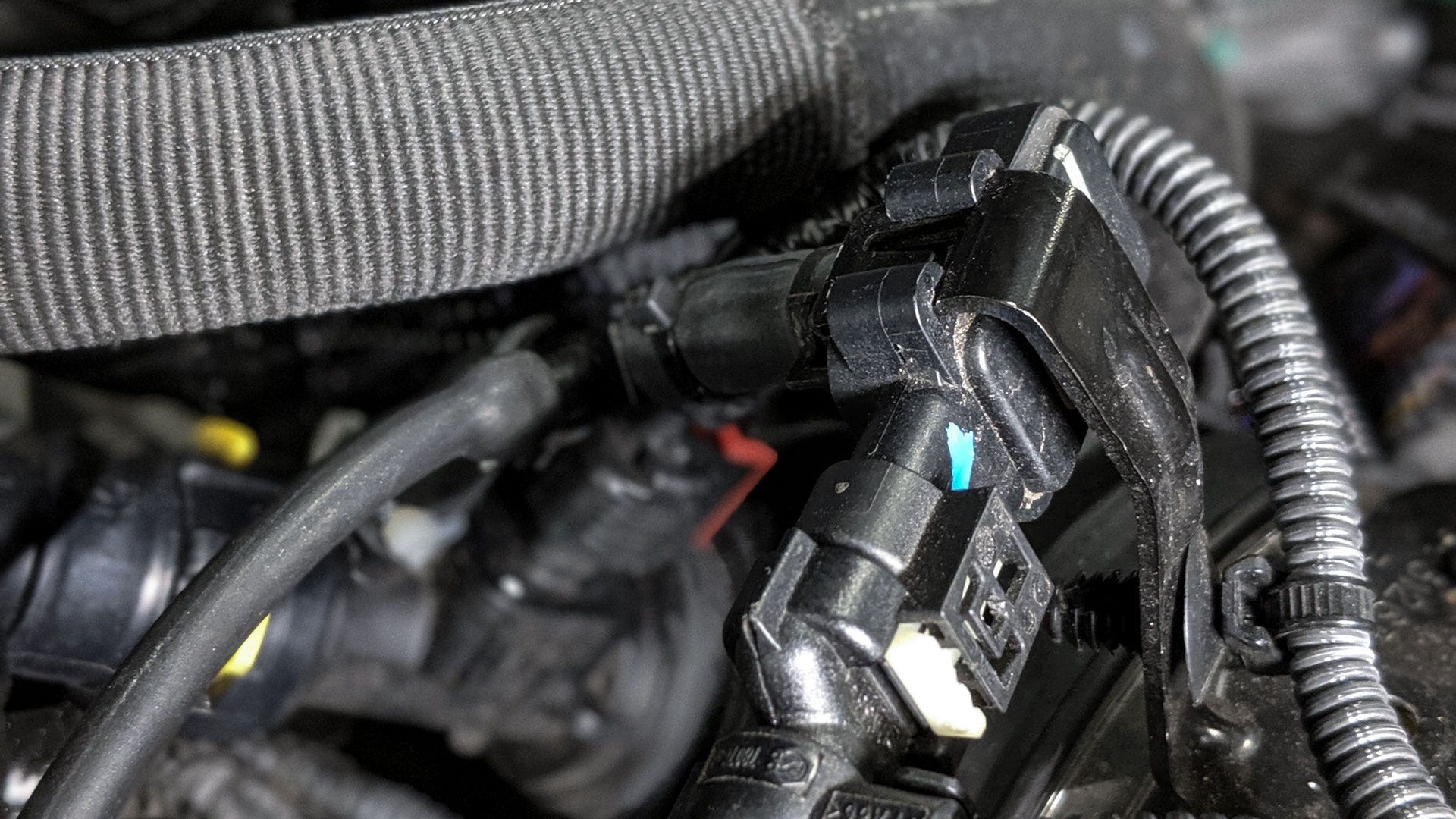
We ran into one of these sensors on our 2015-2017 Ford F-150 3.5L EcoBoost catch can project and it threw us for a loop. We spent weeks testing different configurations to appease the sensor and ended up relocating it. Lucky for us, the 2.0T Hurricane has a very similar sensor on the turbo coupler. Thanks to the design of the intake, we can't move the sensor, so we'll have to work with it. The turbo coupler also incorporates a heater to burn off water vapor and prevent ice from battering the turbocharger's delicate compressor wheel. Both will have to be incorporated into our design.
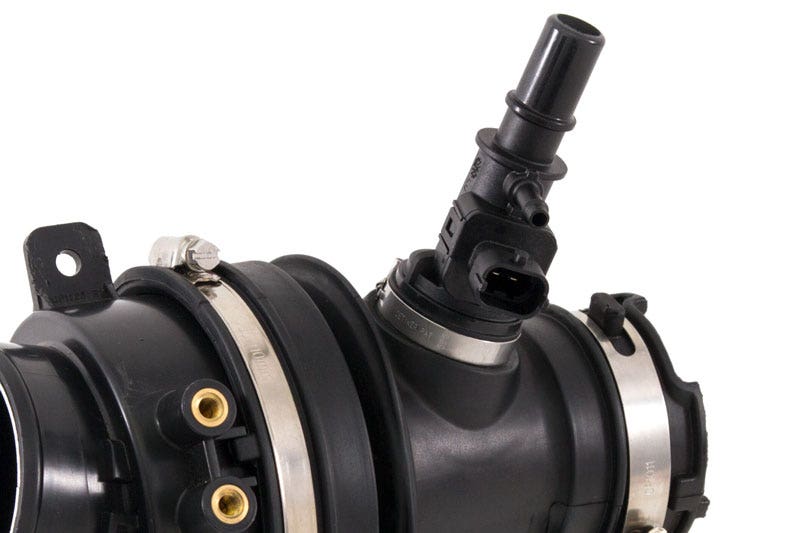
Before worrying
about sensors, heaters, and check engine lights, we need to make sure there's
blow-by in the system to be removed. Like we said in the first post, some
factory PCV/CCV systems are very efficient in removing oil, fuel, and water
vapor from the crankcase gasses and don't need catch cans. On many turbocharged
engines, we've found that the PCV (off-boost) system doesn't produce a lot of
blow-by due to the lower cylinder pressures. If that's the case for the JL
2.0T, we won't waste our customers' money with a catch can that does little in
the way of improvement.
To find out just
how much blow-by the 2.0T Hurricane produces we fabricated a couple quick
brackets to hold two catch cans. We then ran one line from the PCV valve to the
first catch can and another line from the same catch can to the intake
manifold. Any blow-by in this can would be from idle and cruising situations.
The other catch can connects the breather in the center of the engine to the
heater and pressure sensor assembly before the turbo. With the short spool time
of the Hurricane's turbo, we have a feeling that this side of the system will
be active far more often than the off-boost side and will therefore catch much
more blow-by.
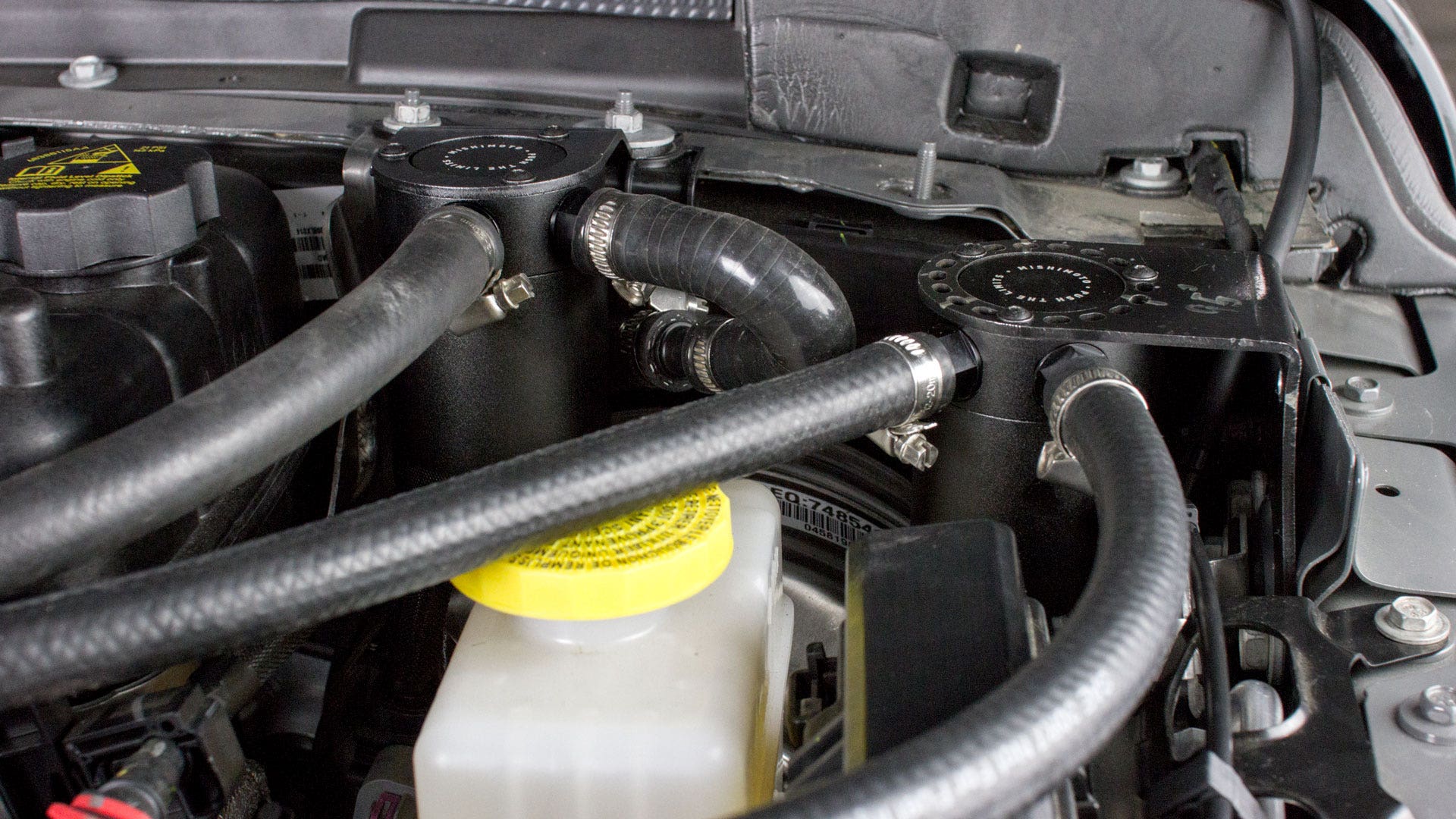
Our proof of
concept catch can kit wasn't pretty, but it will serve to tell us just how much
blow-by the 2.0T Hurricane produces and how sensitive the crankcase pressure
sensor is. We tightened all the clamps and double-checked the
quick-disconnects, then sent our 2.0T to rack up 1,000 miles. But it wouldn't
be long before we revisited our design. Keep an eye out for the next update
where we'll be digging even deeper into the complexities of the 2.0T
Hurricane's CCV system.




